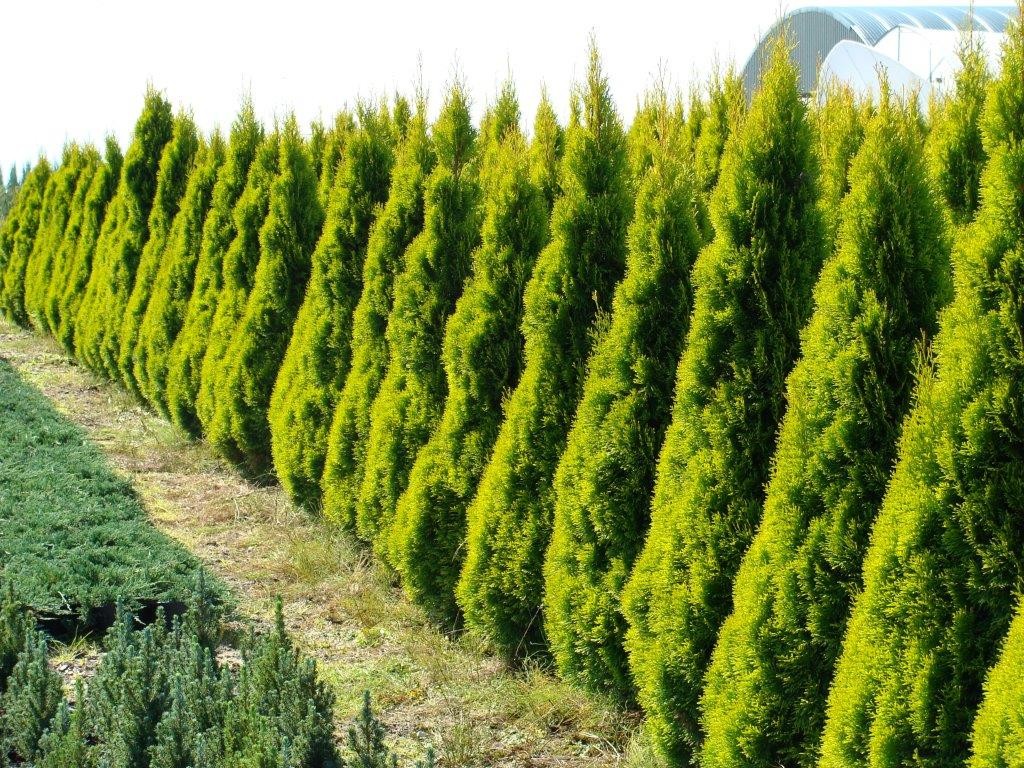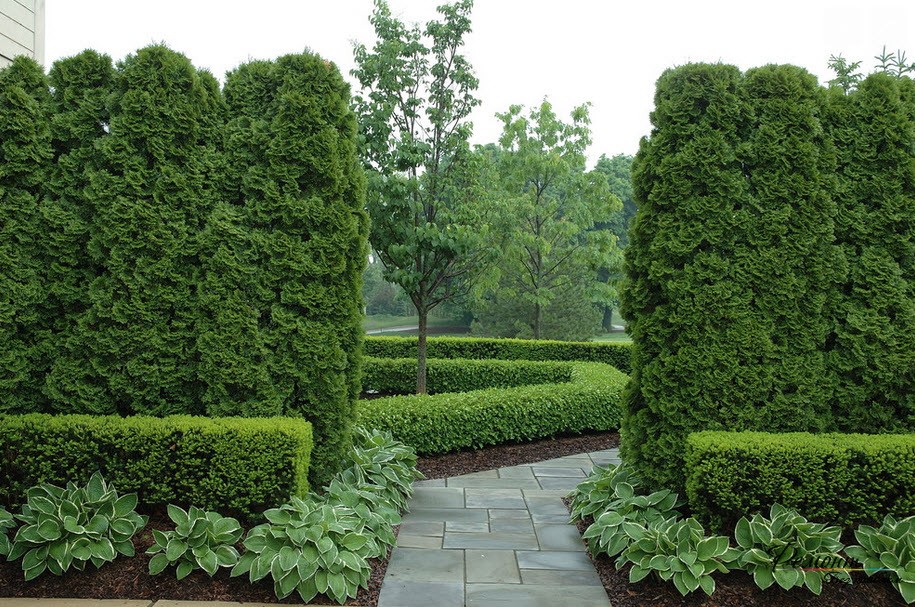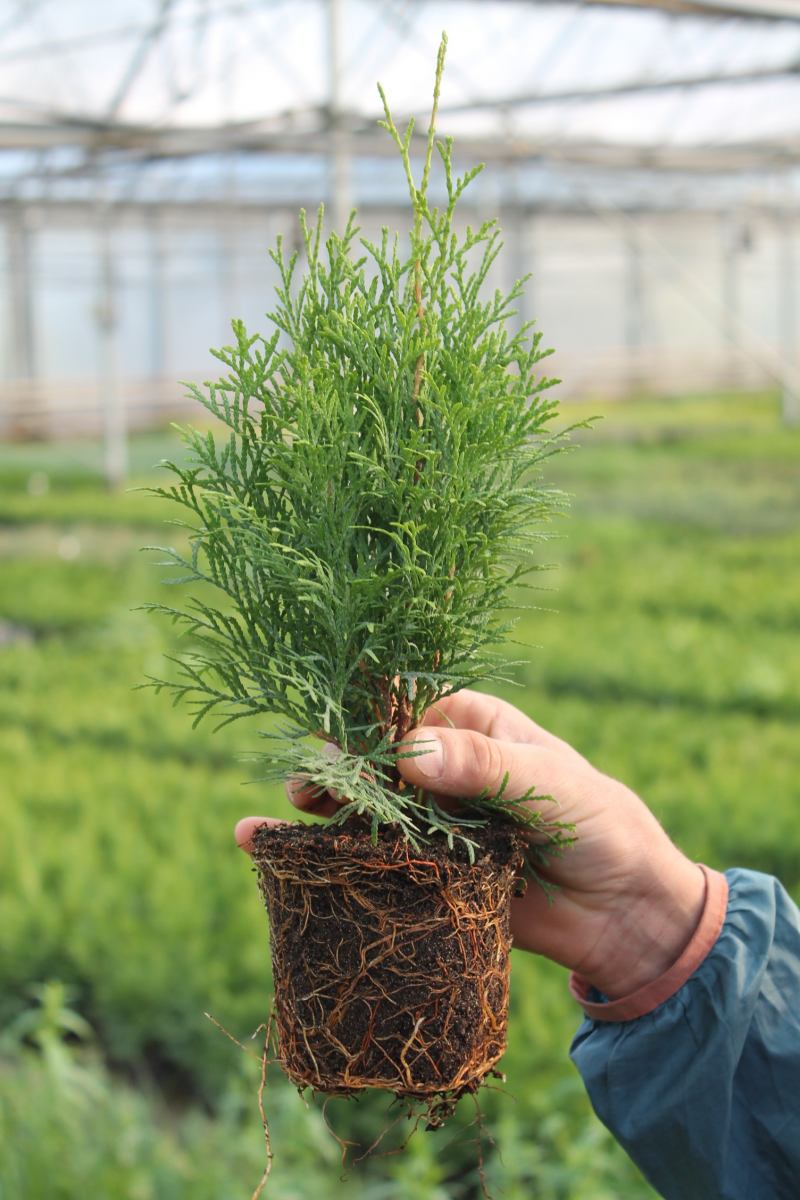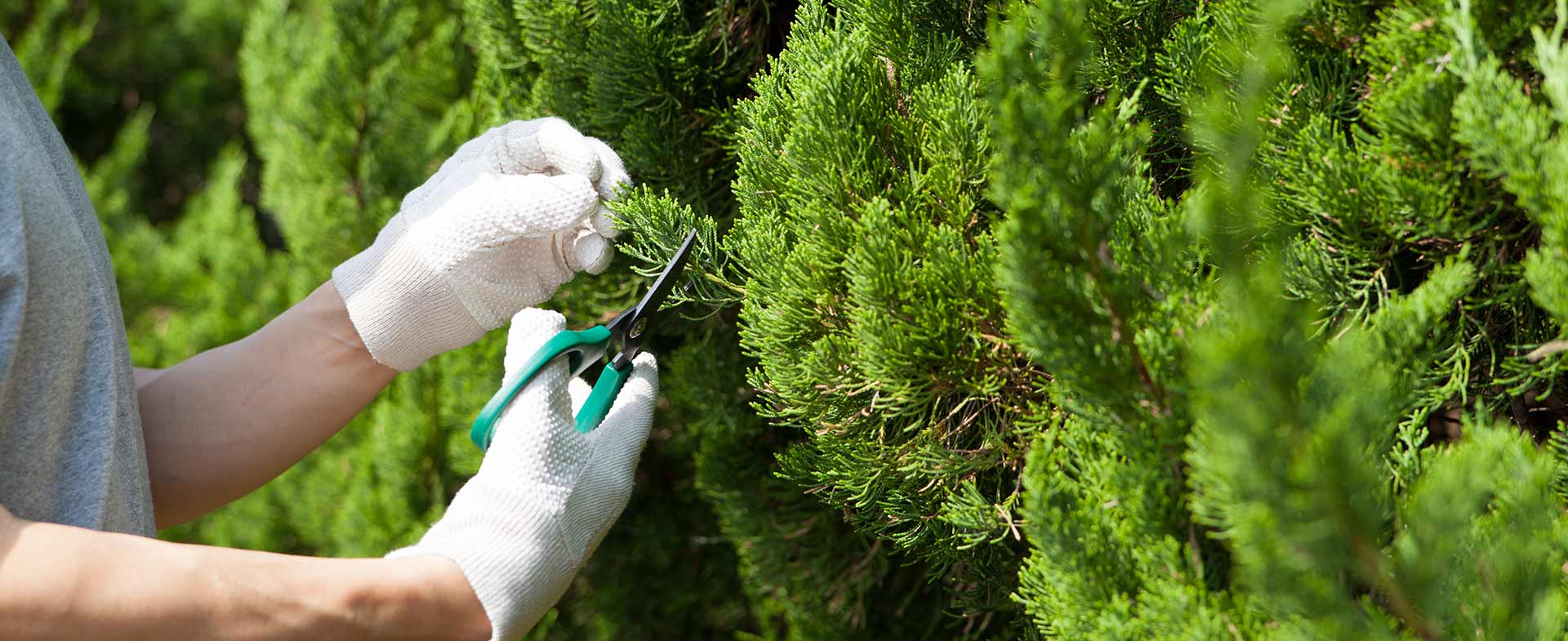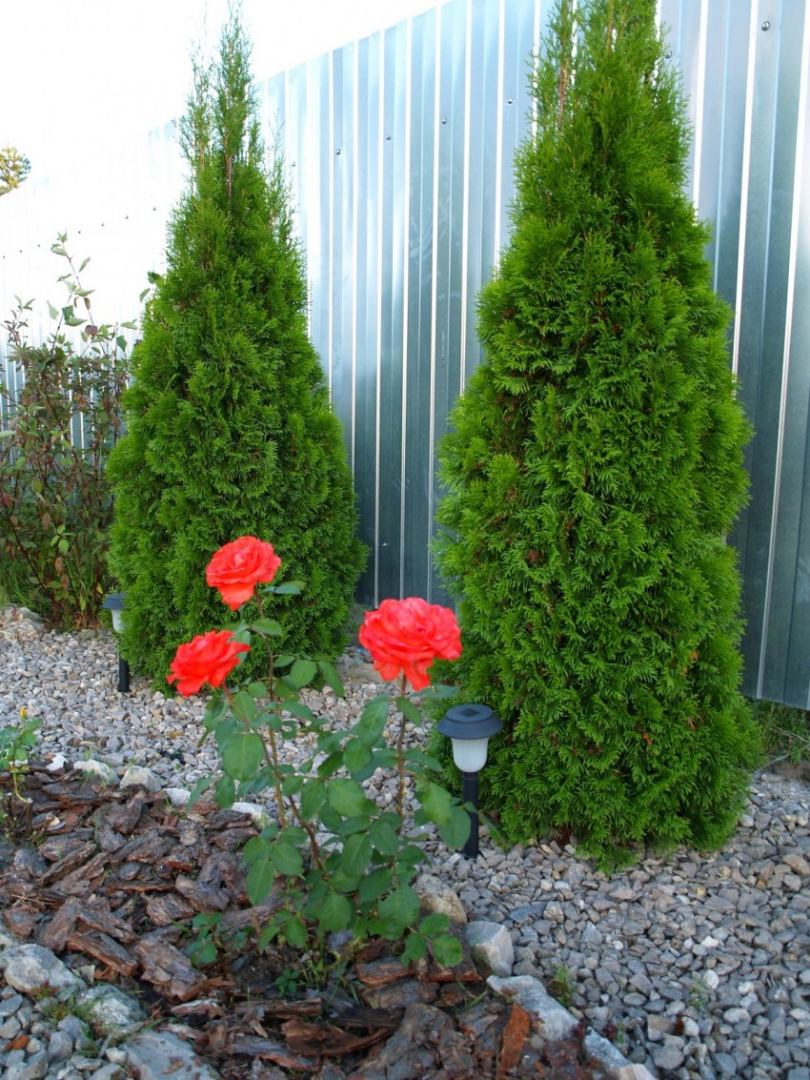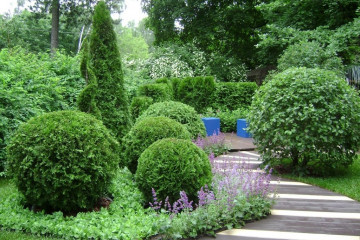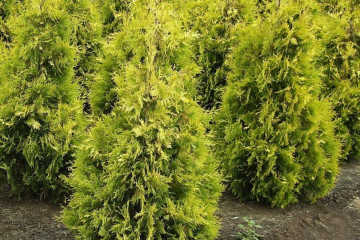Thuya Golden Smaragd - description
Content:
Decorative thuja are planted in their summer cottage so that they look attractive regardless of the season. Thuja Golden Smaragd is one of the most popular and unpretentious varieties. This variety is distinguished by its attractive appearance, slow growth, small size and unpretentious care.
Thuja Golden Smaragd golden (Golden Smaragd)
Thuja Golden Smaragd is an evergreen ornamental plant that belongs to protected varieties, therefore its reproduction is prohibited without special permission. This type is widely used by designers and amateur gardeners in landscape design for framing paths, creating hedges, and also for dividing the site into segments.
Description and characteristics
A monoecious evergreen plant with a dense and narrow pyramidal crown of golden color is called thuja Golden Smaragd. The needles of this tree are bright green. An adult thuja grows in height from 4 to 6 m, the crown diameter reaches 2 m.The average life span is about 130 years. In one year, thuja grows in height no more than 20 cm, and in width by 4-5 cm.
Thuja western Golden Smaragd belongs to the most popular representative of the Cypress family. The crown of the plant is pronounced, with a dense coniferous covering. The tree remains green throughout the year. In the spring, the flowering period begins, during which oblong brown cones appear on the tree, they begin to fall off with the onset of the autumn cold.
Use in landscape design
Since thuja western Golden Smaragd has slender and clear forms, this plant is most often used to create fences in parks and squares. Trees that are planted close to each other can replace absolutely any fence. Caring for such a structure will not cause difficulties. It is enough just to systematically cut a haircut. The tree looks great both in an ensemble and alone.
Planting and leaving
To grow a beautiful and healthy ornamental plant, you must take a responsible attitude to the planting process. It is important to observe all the nuances, since even minor trifles can negatively affect the development of the tree.
How to choose a thuja when landing
Before planting thuja, the seedling must be chosen correctly. Preference should be given to cuttings with a developed root system, which do not show signs of damage and disease. They are planted in late spring - early summer. It is not recommended to plant cuttings in autumn, as frost can negatively affect the root system.
Site selection and soil preparation
It is important to choose the right site for planting.Areas with direct sunlight, which will constantly fall on the plant, are not suitable for growing thuja. They can cause burns and exacerbate moisture deficiency. The most suitable place for growing this variety is considered to be a place with moderate illumination and protection from the wind.
Features of correct planting and transplanting a plant
Correct planting of the plant is equally important. To do everything properly, you need to do the following:
- arrange the seedlings in such a way that the root collar is located above the soil level;
- first you should remove the pot from the root ball, then put the plant in a hole, cover it with soil and water;
- after all actions, the soil should be tamped, if necessary, add more earth.
After planting, it is important to water the plant properly, depending on the season.
Thuja care during the growing season
Thuja Smaragd Gold is considered an unpretentious plant, so it will not be difficult to plant and grow it. For this, it is necessary to provide her with full and regular care.
It is systematically necessary to loosen the soil, remove weeds. It should be borne in mind that this variety has roots close to the surface, so you should be extremely careful.
For the formation of the crown, it is required to systematically carry out pruning and sanitary haircuts. Before the onset of cold weather, the trunks at the thuja rhizome must be sprinkled with peat, needles, dry foliage or sawdust. This is especially important for young seedlings.
Top dressing
The first fertilization is done during planting. The second time feeding is carried out six months later. In the future, an adult tree is fertilized no more than once a year. Spring is considered the most suitable time for this. This frequency is enough to grow a beautiful tree.
Features of winter care for thuja Golden Smaragd
In order for the thuja to endure the winter cold, it must be prepared. This is especially true for Siberia and the Urals, where winters are very cold. The first thing to do is cover the plant for the winter.
It is also worth taking care of the warming of the root system, as this will help protect the plant from frost and death.
Pruning thuja Golden Smaragd
The tree must be systematically pruned. But since it perfectly retains the correct shape for a long time, this will not have to be done often.
Experienced gardeners advise pruning every two years. The best time to do this is in the spring. For pruning, a sharp pruner is used, with which the plant is shortened by 1/3.
How thuja Golden Smaragd reproduces
Reproduction of thuja Golden Smaragd can be carried out in the following ways:
- seeds. They are removed from the cones in the second half of September, and then planted immediately on the site or in February in special containers designed for seedlings;
- cuttings. For harvesting cuttings, last year's shoots are used. Retreat 5 cm, and then cut the cuttings at least 15 cm in size. Remove the needles from the bottom.
Each of these methods has its own advantages and disadvantages. When choosing, you should consider your preferences.
Possible problems in growing thuja Golden Smaragd
Since thuja Smaragd Gold is an ornamental plant, it is often negatively affected by insects and diseases. The most dangerous are:
- the scale is false. It is characterized by the appearance of growths that look like bumps. Any insecticidal preparation is suitable for fighting the parasite;
- fungus. The needles begin to turn yellow, brown spots appear on the shoots. To combat the disease, you need to cut and burn diseased shoots;
- aphid aphid. Shoots and needles are affected. The plant is processed with karbofos.
There are not many diseases that are inherent in this variety of thuja, so it is important to simply monitor the condition of the tree and, if necessary, take immediate action.
Tuya Smaragd Gold, description, characteristics and reviews of gardeners indicate that this is a wonderful and versatile tree. It can grow on any soil and does not require close and complex maintenance. Thanks to her, you can grow a living fence and give a unique appearance to your garden, regardless of the climatic conditions of the region.
